| Numinous The Music of Joseph C. Phillips Jr. |
The Numinosum Blog
|
The site of our own "pale blue dot" is magnificent on its own but this video makes one wonder what beautiful words of poetry would have been written, what lovely odes and songs composed, what marvelous myths and legends created, what joyous paintings imagined throughout our history, if The Rings of Earth were true. POSTED BY NUMINOUS AT 3:42 PM
0 Comments
On Wednesday I responded (twice) to a posting on Greg Sandow's blog entitled Labels. The posting was (I thought) a discussion on what to call the sort of new music found in contemporary classical music circles that draws as much inspiration from Radiohead as Stravinsky. Greg Sandow and others call this kind of music 'alt-classical' while some call it post-classical. In my response to the post, I offered an alternative term, mixed music, to describe this cross-genre music not just in classical music but in other genres as well. Unfortunately (and surprisingly), you will not find my comment on Sandow's blog. Not sure why my response and suggestion wasn't published (is it not as valid and descriptive as alt-classical?) but you can judge for yourself the merits of the term mixed music versus Sandow's alt-classical. Here's what I wrote:
Greg, this whole thought about labels was running through my head during a vocal concert of various 'alt-classical' composers last week at Galapagos. I've been thinking about this for awhile now (well before last week) and it actually inspired the topic for my next Composer Salon as well as a possible alternative to the phrase alt-classical (which while fine, as Chris [Becker] points out above, it seems to be talking about a specific number of young, educated, well-connected NYC composers and so a bit limited and which Molly [Sheridan] points out seems to be a tired hipster marketing attempt to describe the aforementioned type of composer (and their audience) in analogue to the alternative rock world). My term mixed music is borrowed from the racial usage of being of mixed heritage and you can read some of my reasoning to use it to describe today's music at my blog. But in general I think mixed music can be used in a broader sense to describe much of today's cross-genre musical ruminations in classical, jazz, and even pop/rock and beyond. Yet I fully recognize that any label will not be sufficient in capturing accurately all of the 'scenes' or ideas therein and doesn't really say what the music actually sounds like, but I think it works as a description of the general trend today. Also you can check out the link to the next Composer Salon where I discuss mixed music in more detail. POSTED BY NUMINOUS AT 6:00 AM 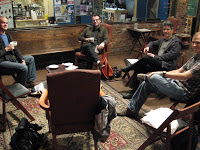 It's time again for the next Composer Salon on Tuesday December 8, 2009 from 7 pm to around 9 pm at the Brooklyn Lyceum (227 4th Avenue in Park Slope, Brooklyn). The Lyceum is literally above the Union Street M, R Train stop in Brooklyn. The Lyceum does have various inexpensive libations including different beers, wine and other non-alcoholic beverages, as well as coffee and baked goods. If you are a composer/musician in New York City area, regardless of genre, style, or inclination, I hope you can come out, meet some new and old faces behind the blogs and comments and listen or join the discussion. Salon Topic #3: “What makes the history of music, or of any art, particularly troublesome is that what is most exceptional, not what is most usual, has often the greatest claim on our interest. Even within the work of one artist, it is not his usual procedure that characterizes his personal ‘style’, but his greatest and most individual success.”—Charles Rosen, The Classical Style On November 19th, I attended the 21cLiederabend concert at Galapagos Art Space in Brooklyn's fashionable neighborhood of DUMBO. The performance, co-produced by Galapagos, VisionIntoArt, Opera on Tap, and Beth Morrison Projects, was billed as "a multimedia performance featuring vocal works by some of New York's rising young stars of post-classical composition." Composers Caleb Burhans, Leah Coloff, Corey Dargel, Osvaldo Golijov, Judd Greenstein, Ted Hearne, David T. Little, Missy Mazzoli, Nico Muhly, Milica Paranosic, Kamala Sankaram, and Paola Prestini all had pieces performed and while I enjoyed most of the compositions (some quite a lot: Greenstein's "Hillula", Golijov's "Lua Descolorida", and Mazzoli's "Song from the Uproar" were three of my favorites) at some point during the show, as I listened to the works brimming with compelling ideas and sounds, I began to wonder what music historians will make of our age. Almost all of the compositions had a seriousness purpose, to be expected from the erudite and aware composers. Happily, for me anyway, while there wasn't any real stylistic unity between the compositions, there were a few things in common. One was that each composition seemed to be intent on working a 'new beauty' aesthetic: generally euphonic sounds (even the dissonances) with a more contemplative (not necessarily slow) musical tone. Second was that all of the pieces seemed to be what I call, mixed music: music that goes beyond the rigid definitions of a singular genre to organically fuse multiple styles into something completely different (think how children of mixed race couples are neither one yet both of the races of their parents). For example, the compositions at Galapagos were clearly influenced in form, instrumentation, and rhythmic and harmonic adventurousness by classical music but also included elements from other more popular musical forms and cultural sensibilities (whether pop, rock, hip-hop, etc.). Other terms for this type of composition in the classical world are alt-classical or post-classical, but I think my term mixed musicbest describes this trend in music because it can reflect many different hybrids of styles: from the jazz world (groups such as the Bad Plus and Darcy Argue's Secret Society mixing the jazz and rock/alternative worlds; Robert Glasper's work with Q-Tip, Kanye West, Mos Def, and Maxwell or Roy Hargrove playing with D'angelo or most of MeShell Ndegeocello's output all working the jazz and creative black popular music angle (sometimes with a decidedly Prince-ian eclecticism and élan); contemporary classical and pop or electronica (Nico Muhly or the new In C Remixed recording) or my own compositions with Numinous, which fuses elements from contemporary classical and jazz to other more popular forms). While there is much fundamentalism and narrow-mindedness in values and taste in today's society, which is often defended in the most obstreperous manner leading to more and more ossification of those values and tastes (think of the political climate in the US and you get what I'm saying), I could argue that this entire generation or era is one of mixed sensibilities: racially, financially, temporally, and culturally. Even though I'm not one for labels since they usually only hint at something and are partially accurate at best, I do understand in the 'real world' that they are necessary so the term mixed music seems an appropriate one to describe much of the music of our time, at least in much of the creative artistic music with its heterodox movement toward a 'beyond-genre-ness'. But there is a danger with no overarching stylistic unity or this blending of styles and influences to center or ground a composer, similar to what Leonard Bernstein discussed about music's meaning and intelligibility in his Norton Lecture "The Delights and Dangers of Ambiguity": what makes a composer's voice consistent and understandable from piece to piece? At the 21cLiederabend concert I was reminded of Wassily Kandinsky’s discussion of Pablo Picasso's style in his Über das Geistige in der Kunst (Of Concerning the Spiritual in Art). Speaking of Picasso he writes: “Tossed hither and thither by the need for self-expression, Picasso hurries from one manner to another. At times a great gulf appears between consecutive manners, because Picasso leaps boldly and is found continually by his bewildered crowd of followers standing at a point very different from that at which they saw him last. No sooner do they think that they have reached him again than he has changed once more.” With all of the stylistic borrowing, how do you make something that isn't pastiche? What filament runs through someone like Picasso to make it Picasso? I mean Steve Reich sounds like Steve Reich. John Adams, John Adams. Philip Glass, Glass. Charlie Parker. Bird (well, I guess you could say Sonny Stitt also sounds similar to Bird, but that's another discussion; on the Jazz Loft Project Episode #10 listen to pianist Paul Bley talking about finding one's own sound after Charlie Parker died). But listening to the composer's compositions on November 19th, what thread runs through their works? Besides their names on the scores, what makes a piece by Missy Mazzoli, Missy Mazzoli's? Nico Muhly, Nico Muhly's? Joe Phillips, mine? And, of those on the Galapagos concert, asking the question Norman Lebrecht asked in his recent poll of composers we'll still be listening to 50 years from now, whose sound and music will we be hearing from 50 years from now? 100 years? 10 years? Does it really matter? To relate to the Charles Rosen quote above, is all of this stylistic borrowing and the music that encompasses it, what is 'exceptional' in our age or usual? Years from now, what will mark people's interest in the music of now? So here are a few thought-provoking statements and fodder for discussion relating to style and the freedoms (and limitations) in our mixed musicera: I. Arnold Schoenberg writes in his Die Musik, “Every combination of notes, every advance is possible, but I am beginning to feel that there are also definite rules and conditions which incline me to the use of this or that dissonance.” What are the rules now? Is it rules or just taste? Whose taste dictates what is 'good'? II. Jazz composer, pianist, and AACM founding father Muhal Richard Abrams tells Francis Davis in a February 1991 article, “In the beginning, jazz was an abstract process. It wasn’t any particular style yet. It sounded like whatever the musician wanted it to sound like. It stood for the freedom to experiment, the excitement of things never quite coming out the same.” Do you feel jazz has moved away from the inclusive origins Abrams talks about? Is that spirit and 'freedom to experiment' alive in today’s jazz? How do you balance experimentation with standard practice in your own music? If it sounds like 'whatever you want it to sound like' why identify yourself as a 'jazz' composer? a classical composer? a pop musician? etc. III. Composer Daniel Lentz says, “style is really just learning how to repeat yourself, sometimes endlessly. If you keep changing your language and what you do, which is a very noble thing to do, nobody will know who you are?” Do you agree with this statement or not? Thinking about the Kandinsky quote on Picasso, do you strive for a “coherence or singularity” in your musical language or is your language "tossed hither and dither"? What characteristics would define your own personal style? IV. Morton Feldman writes in his essay "The Anxiety of Art", “The painter achieves mastery by allowing what he is doing to be itself. In a way he must step aside in order to be in control. The composer is just learning to do this. He is just beginning to learn that controls can be thought of as nothing more than accepted practice.” Is control nothing more than “accepted practice”? How do you control and manage the flow and freedom of ideas during the composing process? How does this relate to the Daniel Lentz quote above? If you are a composer or musician or music lover in the New York City area, consider coming down to the Lyceum and joining the discussion, or at the very least adding your thoughts in the comments. Hope to see you on December 8th! POSTED BY NUMINOUS AT 5:19 PM Here is an insightful article about how the words of America's 'lost founding father' Thomas Paine find themselves in Sarah Palin's new book, Going Rogue. The article's author is historian and Paine scholar Harvey Kaye, whose book Thomas Paine and the Promise of America (which you should read by the way) along with, of course, the actual writings of Paine, was one of the catalyst and inspirations to my dance project in June 2010 with choreographer Edisa Weeks, To Begin the World Over Again. The article cogently argues that Palin along with other conservative politicians and thinkers wrongly decouple Paine's words with the actual radical and progressive thoughts behind them.
POSTED BY NUMINOUS AT 7:20 PM A few weeks ago I said I might give you a window into some of my experiences in my teaching life, so from time to time I'll be writing about various adventures, both present and past in a series called, Notes from the Teaching Field.
As I mentioned in that earlier post, I have been teaching kindergarten music at PS 321 in Park Slope, Brooklyn for a number of years now. PS 321 is one of the most sought after and highly acclaimed public schools in the city (one in which many parents choose to send their kids to instead of the $27,000-a-year private school down the street; boy, that's a whole other topic which I could expound on at length) and I'm very honored to be a part of a community of highly devoted and excellent educators, administration, and families. Besides kindergarten music, I also teach math games to the kindergartens; I see each of the 10 kindergarten classes twice a week: once for music and once for math. In addition to music and math, I am in charge of lunchtime/recess for the 1st graders (almost all of the students whom I had the previous year). This year there are 11! 1st grade classes so, with another teacher and various aides and paraprofessionals, we have to manage about 250 kids in the lunchroom and on the blacktop. If you were to pass by the schoolyard around lunchtime one day, you'd hear me blowing my whistle and loudly projecting my voice (from the diaphragm, of course) over a half-a-city-block school yard to corral all 250 into straight-lines at the end of recess. So I have two full-time jobs: teach the little Jungen und Mädchen by day, composer/business manager/blogger at night. That old saw of "those that can't do, teach" doesn't seem to apply to me and many of today's professional musicians. And while I definitely don't consider myself a kindergarten music teacher but rather a professional musician/composer who happens to teach kindergarten, I do take my teaching responsibilities seriously, as I do I my composing. I am presently reading Peggy Tyre's book The Trouble with Boys and I'm conscious about my being a young-ish, male teacher in an environment which doesn't typically see many male teachers (although we do have 2 of the 10 kindergarten classroom teachers who are male and a number throughout various grades and subjects; all three music teachers me (kindergarten), Frank McGarry (grades 1 and 2), and Adam Lane (grades 3, 4, and 5) are male, for example). And for the students to daily see and have, not only good male teachers and role models, but in my case, a male teacher who also happens to be African-American, can only help imprint positive impressions on all the young boys and girls. Originally I was going to talk about how teaching little kids has nothing to do with my composing life, but in reality that isn't quite true. Being in the moment while writing music is much like teaching the students, especially the kindergartners. In writing music if you aren't really 'there', the ideas don't flow and you don't see or hear what your piece is (or will become) and your output will be disorganized and not cohesive. In teaching kindergartners, if you aren't fully engaged or engaging then things will also be unorganized and worse; you'll unleash the 24-kids-of-the-apocalypse who will wreak havoc on the classroom in their quest of knee-biter retribution for the sin of causing them boredom. I mean really, can you see John Adams, Steve Reich, or David Lang dealing with one kid crying about missing their mom, two kids arguing about not having enough space on the meeting rug and being squished, one kid raising their hand to go to the bathroom with three more saying they have to go to the bathroom too because the one kid raised their hand to ask to go to the bathroom (kind of Kafka-esque, right?), the one kid that already went to the bathroom...in their pants, three kids simultaneously trying to tell me about their wiggly tooth or that their father or mom plays piano or that they love Star Wars or that they have a playdate later that day, and all of this at the same time as the class is singing one of our favorite songs, "Mama Don't Allow (No Music Playin' Around Here)"? Hey while a Pulitzer might have cachet with their parents, it gets you no love with a 5-year old! In fact that Pulitzer Prize Medal would make a nice plate in the pretend play center's kitchen. Seriously, though, do you know how difficult it is to manage and teach a classroom of the students? Anyone with young kids of their own can tell you, just one is a handful. Now imagine having 23 or 24 to deal with! If you don't have respect for any classroom teacher who has to deal with all of the kids all day, every day, then you should! People on the outside of education assume, hey only 6 or 7 hour day and two months off in the summer, that's so cushy. Dealing with the education of kids is no easy ride; figuring out why one little girl isn't reading or writing up to her potential or why one little boy doesn't seem to be connected with other kids is hard work. And not only do teachers have to teach during the day, but also spend many hours after-school and at home, on weekends grading and planning (yes, planning even in the summer) on top of much bureaucratic paperwork and necessary record keeping. I've done many kinds of jobs over the years, and teaching by far is some of the most difficult. Of course it isn't all chaos and tears. There are many lovely moments and overall it can be some of the most rewarding and fun work you could hope for. Where else can you have 24 kids literally light up when you walk into the room or when they see you walking down the hall? where you often get marriage proposals, from boys and girls? or where you'll get an unsolicited hug or "I love you" just because? or where else do you get to see a kid who could barely read and hold a pencil at the beginning of the year, by year's end can read and write their own stories? While their innocence and openness to show their feelings naturally changes as they go up the grade ladder (I was a high school band director and International Baccalaureate music teacher many years ago, which I'll talk about in a future post, and that had different difficulties as well as it's own unique and beautiful charms and joys), it is incredibly wonderful to enjoy while they are in kindergarten and I'm fortunate to have the opportunity to be a little part of their lives. And this brings me to the reason for this post. As any teacher of young kids could tell you, one thing you often receive from students, besides the hugs and smiles, are personal notes and drawings. And often they are so funny and warm and sincere, that you can't help but feel as if the sun is bursting through your heart. These drawings above were given to me at the end of last year by one first grade class. I really love these because it is a little peek into how I'm viewed through the prism of first grade eyes. Each of these drawings were accompanied by notes about how the kids enjoyed having me be with them at recess/lunchtime. But what I find interesting is that after seeing all of these drawings I told my wife that, "Gee, I guess I do have a uniform!" Because all of the renderings are some variation of me smiling, wearing my red AC Milan jacket, jeans, baseball cap, and the all-important whistle. In fact I loved the top drawing by a little girl so much (that's her next to me), it is framed and sitting on my bookshelf in a place of honor next to a statuette of me conducting made by one of my high school students many years ago. One note a few years ago from a 2nd grade girl whom I had back in kindergarten was quite nostalgic with a hint of wistfulness when she wrote, "Remember how much fun we had in kindergarten." In one kindergarten class last year I played the opening to J.S. Bach's Toccata and Fugue in D Minor complete with spooky organ sound. At the end of the prelude, as the rising half-diminished chord builds, I give an 'evil' laugh (think Vincent Price at the end of "Thriller") with screams of delight radiating throughout the class. Well the next week in music class, one little girl comes up to me just as the class is starting and says she has a note for me. Since kindergarten spelling can be hard to decipher (as you'll see below), I asked her to read the note to me. Among a few things the note said was "please don't play that scary music, it gives me nightmares." But on the other side of the note it concluded, perfectly spelled, with, "P.S. But I still love you!" I like the above note because it recognizes that sometimes I have to put people in timeout during lunch/recess and they understand that. This one is a nice thank you, recognizing that I can be a game changer in the lives of the students...well, in the all-important kickball game. Keep checking back for more views into my 'other life' in the next installment of Notes from the Teaching Field. POSTED BY NUMINOUS AT 7:15 PM This morning, I just finished listening to the first in a radio series on WNYC here in New York about the Jazz Loft. Here is how WNYC describes it:
In 1957, photographer W. Eugene Smith moved into a loft at 821 Sixth Avenue. It became a hangout for artists, writers and especially jazz musicians, who rehearsed and jammed there. By the time Smith left the loft more than a decade later he had documented the activity there through 40,000 photos and roughly 4,000 hours of audio tape. It was a intimation of what it must have be like to be a jazz musician in New York in the 50's and 60's. It was fascinating to hear how easily all of the greats (Monk, Parker, Bill Evans, Zoot Sims, etc.) all freely interacted and jammed together (intermixing outside the loft, jazz clubs excepted) probably not so easy. I loved the reminisces from various musicians including how some called the building "funky", which meant smelly and dirty, not hip and cool, how they often had to hide the mattresses so the cops wouldn't know people were living there, and of course, I loved hearing Steve Reich, who was taking lessons from pianist Hall Overton, talk about climbing the grossly leaning stairs to get to those lessons. I look forward to listening to the rest of the series. Below is the schedule and if you have a chance check it out on WNYC online or over the air. THE JAZZ LOFT PROJECT RADIO SERIES Broadcast Schedule for The Jazz Loft Project Radio Series Monday Nov 16 Episode 1 “Introduction” runs in Morning Edition Tuesday Nov 17 Episode 2 “Images of the Loft” (Eugene Smith) runs short in Morning Edition Full piece runs in All Things Considered Wednesday Nov 18 Episode 3 “The Tapes” runs short in Morning Edition Full piece runs in All Things Considered Thursday Nov 19 Episode 4 “Hall Overton” runs in Soundcheck Friday Nov 20 Episode 5 “Before the Loft” runs in All Things Considered Saturday Nov 21 Episode 6 “Ron Free” runs in Jonathan Schwartz (scheduled to run at 2 PM) Sunday Nov 22 Episode 7 “Flower District” runs in Weekend Edition Monday Nov 23 Episode 8 “Monk Town Hall Concert” runs short in Morning Edition with full piece running in All Things Considered Tuesday Nov 24 Episode 9 “More Tapes” runs in Soundcheck Wednesday Nov 25 Episode 10 “Times Change” final episode runs short in Morning Edition full piece runs in All Things Considered Thursday Nov 26, Thanksgiving Day 1-hour special featuring “Jazz Loft Jam Sessions” runs on FM at 3PM and 9PM Saturday Nov 28 1-hour special featuring “Jazz Loft Jam Sessions” runs on AM at 2PM Sunday Nov 29 1-hour special featuring “Jazz Loft Jam Sessions” runs on AM at 8PM POSTED BY NUMINOUS AT 8:14 AM I just saw the November 16th issue of New York magazine with the cover story entitled, Brooklyn's Sonic Boom: how New York became America's music capital again.
The cover photo shows three 'indie' rock bands (does indie mean anything anymore if almost everyone seems to be independent now?): Dirty Projectors (the photo above, from New York Magazine), Grizzly Bear, and MGMT. Honestly, the first thing I noticed is that everyone in each photo has the same hipster, non-smile, smile: Mona Lisa-esque pursed lips and the eyes either a 'cool-young-rock-band' stare, a faux-self-deprecating laughing irony, or a hipster distance. Second thing I noticed, as I opened the magazine to read the article, was a glaring dearth of diversity. Not just racial, which is pretty obvious, but also musically. Really, Brooklyn doesn't have a vibrant hip hop and rap scene? how about jazz? a happening black rock scene? With an article that purports to show how New York is "America's Music Capital" again, shouldn't there be a cross-section of musical happenings in Brooklyn now? Or you if you wanted to keep the article's same focus, you could have a title with less rhetorical flourish and which reflects more truth: Brooklyn is the Music Capital for those parts of America that like independent rock music made by young-ish, (mostly) white, educated people. How many times do we need to keep hearing about the young, Williamsburg hipster indie rocker (and this isn't criticizing the music by these groups, which I've checked out some of, and like some of; just the coverage)? I get it. Young. Cool. Hip. Attractive. Good Music. Of course this kind of coverage is the same in the classical music world, with the young-ish new music-y types. Please guys, next time can we go a little farther afield than Williamsburg to find out what is really happening musically in Brooklyn? POSTED BY NUMINOUS AT 1:13 PM Over at Greg Sandow's blog one of his reader's named Janis has a wonderfully intriguing idea inspired by the Star Wars Uncut website.
Here's the idea as Janis describes it: Take a well-known shortish piece of music (not an obscure one, one that a lot of people know, like a nice standalone piece of Beethoven's 9th or the end of the William Tell overture), and break it up into bits, perhaps twelve measures apiece. Open them up to being "claimed" by people online, probably students. Each student claims a chunk of the music ... and interprets it however they want. Some will play it straight on an oboe or violin. Others may whistle it. Others will use synths, others can hum it, still others can bang on kitchen pots. They upload their "chunks." Then ... stitch the pieces together and play it. Some of my thoughts about the idea for classical music, are over in the comments at Greg's blog, but here's a point I said there and I'll repeat here: SW [Star Wars] is quite iconic, even the causal moviegoer or non-sci-fi fan, knows SW. While the Beethoven and Rossini examples are quite known, I don't think they rise to the same level of coverage in the general public's consciousness as SW. And sure the people who are doing the SW send-ups are probably SW fanatics, but the people who view it are, my guess, more broad than that since the movie goes beyond sci-fi fans. I don't think you'd ever get the same broad cross-section of listeners with a classical music version. As an idea for classical music fans, I think it is great and a very fun thing to try. Heck, I might even try my hand at one little chuck of Beethoven if the idea becomes reality. But part of the idea reminds me of various responses (rebukes?) of some of the ways artists today have to keep coming up with more and different 'pitches', just to be heard over the din of societal "overchoice". Really?!, how relevant can classical music (or jazz or any art, for that matter) be in today's world, if the only way to get the layperson to listen to or see your work is to create a Rossini mix contest or a YouTube Symphony? or put a shark in formaldehyde? (or, in a completely different vein, to hide your son in the attic in hopes of a reality show? or yell "You Lie!") Are these truly the ways to create a lasting connoisseur of one's work or position in today's world? Artists, musicians, actors, writers and other creative types (not to mention politicians) always had to be imaginative barkers when marketing themselves and their image to the public. As Jacques Barzan wrote in The Use and Abuse of Art, "Historically, the artist has been a slave, an unregarded wage earner, a courtier, clown and sycophant, a domestic, finally an unknown citizen trying to arrest the attention of a huge anonymous mass public and compel it to learn his name." And I'm not knocking people for trying these different ways to be heard; it is actually fun to come up with meaningful and real avenues to connect listeners with one's artistic product. I'm just wondering why it seems so much harder these days? what has changed to make it so? Anyway, check out The Star Wars Uncut site if you haven't, it is pretty fun seeing what people have done with their scene and it reminds me of some of the continued voyages of fans in the Star Trek universe. Not that I have seen those...really, I haven't...really... POSTED BY NUMINOUS AT 10:10 PM 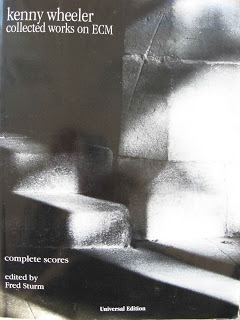 "The Wheeler sound is one of the most distinctive in the history of the jazz trumpet. A thin, overblown note is followed by a florid flurry, the high squeal by a long low note he rolls around his mouth like a chewy mint. Although his phrases are bordered, like blotting paper in ink, with romanticism, the comforting phrase is superseded by the querulous, a moment of tenderness by a scream of panic. He has his trademark tics, but is incapable of producing a hackneyed phrase. Like words from a prophet, every note counts." - Sholto Byrnes in The Independent, 20 August 2002 (quoted on guitarist John Parricelli's website and borrowed from Wikipedia) In the wrap up of Patrick Jarenwattananon's Jazz Now series over at NPR's A Blog Supreme, unless I missed something, I noticed that Kenny Wheeler's name comes up only once: for his great 1997 album Angel Song, which is technically out of bounds of the Jazz Now criteria of albums released in the last 10-years (if you don't know, Jazz Now asks a few jazz stalwarts to introduce "new listeners to new jazz, five hand-picked albums at a time.") I thought if any jazzer could turn new listeners to jazz, it would be him. So the Jazz Now series got me thinking where is Kenny Wheeler? Because while in the last 10 years or so he has put out a number of albums under his own name, as a sideman, or in conjunction with groups like the Upper Austrian Jazz Orchestra, it seems to me, with my own parochial view of the jazz world, like he's no longer considered in the vanguard of things. Or even in the discussion. Granted, Kenny Wheeler's arguably most influential and best recordings were from the 1970's, 1980's and early 1990's (Angel Song, excepted) but those albums are certainly some of the most continually listenable and enjoyable albums: Gnu High (1976), Deer Wan (1978), Music for Large & Small Ensembles (1990) and all of the Azimuth CDs (with the wonderful Norma Winstone and John Taylor) are all great examples of the exciting performances and excellent compositional acumen and fecundity to be found on most Kenny Wheeler recordings. For me his compositions (and trumpet/flügelhorn playing) always seem pregnant with a sort of "looking-off-into-the-distance" quality; a certain warm autumnity reflecting a sense of life's joys and sorrows. An air of the mysterious and a hint of melancholy or perhaps wistfulness, even on up-tempo pieces, pervades his sound world and while not directly influencing my own musical development (I didn't come to his music until about 12 years ago or so), I, nonetheless, find his music continually appealing and attractive and could see how a layperson, with limited knowledge or exposure to jazz, could as well. So where is Kenny Wheeler? POSTED BY NUMINOUS AT 1:48 PM 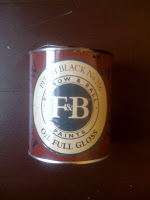 This summer I had a number of goals to accomplish around the house, although really two major ones: demolish the old wooden gate and fence in order to build a new one from scratch (Check!) and strip, sand and repaint our front doors. One thing that attracted us to our house when we first saw our place were the beautiful front doors. The house is old, so these are no Home Depot specials! They are lovely 12-foot high, arched cathedral-like wooden double doors with windows, medallion carvings and intricate (but not fancy) metal hardware. The side panels also have the medallion carvings in addition to a wooden rope design running along the entire edge of the door frame. I'm not sure the type of wood the doors and panels are made from but one neighbor who has done a lot of refinishing of doors, saw ours after I had stripped them, and said they were probably some combination of oak and mahogany with the medallions and edges most likely pine. The doors were originally a chocolate Labrador color with a layer of lacquer or varnish over top of the paint and while some of the paint was flaking off, generally everything was in very good shape and probably could have lasted another 10 years or so. However, if the front doors of a home make a statement about who lives in the house, then by repainting the doors my wife and I would help to project a little bit of ourselves, or who we want to be, to the world (well, at least to those walking or driving down our street). We have been to London many times and both of us love the classy shiny black doors you often see on residences there. The glossy black seems to give the homes a stately air of elegance, with the most famous example of this being 10 Downing Street. Now we weren't necessarily going for the Prime Ministerial-look, especially since our doors are a completely different style, but we did want to project that same kind of grace. So this spring we ordered three .75 litre cans of good quality oil paint from England (Farrow and Ball, Full Gloss Black exterior paint) and the stripping began. This kind of work, like the fence and gate earlier in the summer, were new to me. And I certainly made a few mistakes (hey, did you know chemical paint remover can REALLY burn your hands through vinyl gloves?) but overall things went well, if slowly (I only did a few hours each day; sometimes two hours was how long it took just to remove paint from the groove in one small section of the medallion, for example). I started off removing the paint with just a scraper, muscle power, and patience. When I was able to remove all I could by that method, I used a chemical skin, um, paint remover to get the rest; often having to apply it multiple times to remove multiple layers built up over the years. Once all of the paint was removed (which by this time, after an unexpected but necessary work stoppage of a few weeks, was around the first days of fall), the doors were a wonderful natural wood color, with the grains of the wood quite prominent. It actually was looking so cool au natural that we had to seriously deliberate whether to go ahead with the original plans of sanding and painting or just leaving the doors as is. After a few days of no work on the door and with the weather beginning to hint at colder temperatures, we decided to stay the course and paint. The sanding and priming went pretty smoothly, after which the masking and the actual one coat of painting took two full 10 to 12-hour weekend days to complete (only breaking for the bathroom and food). Now living with your face inches away from something much of the summer and early fall, really builds intimacy! And I got to know all the little crevices and cracks of the door very well. It was such detailed and difficult work and I have complete respect for all of the craftspeople that do that kind of labor fulltime. At the end I was completely exhausted and spent as it was deceptively intensive work, but it also was some of the most fulfilling. I did learn much which will help me as I strip and paint the not-nearly-as-grand-side-porch door next summer but for now I'm happy with how the front doors look and with the little bit of London our home now shows to the world. I finished the doors the weekend before we were set to host the entire 16-person Industrial Jazz Group at our house as part of their Rocktober East Coast tour. A wonderfully inventive and fun ensemble which defies easy classification, IJG is led by Portland, Oregon based composer and ringmaster Andrew Durkin whom I knew only from being a regular reader to his blog (and you should be too). I was working hard that last weekend to finish the doors and have the resultant mess I made on the porch and in the foyer cleaned by the time they drove up; nothing screams déclassé to your guests like a welcome mat of stained rags and paint cans greeting them at the front door. But by the time everyone got to our house, everything looked great and it all work out beautifully in the end for we made 16 new friends. POSTED BY NUMINOUS AT 10:02 AM This past weekend I was listening with interest to a story on NPR about middle class black and Latino students and the continued achievement gap with their white and Asian peers of similar backgrounds. Part one was on Weekend Edition Saturday and part two on Sunday. The NPR site also has a link to the full hour long radio documentary, Mind the Gap: Why Good Schools are Failing Black Students by Nancy Soloman as well as a few links to other related stories.
I'm still processing how I feel about the story and my own thoughts about the gap, but among many things, I found this interesting from the story: [Melissa Cooper, sociology teacher at Columbia High School says] racial stereotypes are so powerful that black children are much more limited in how they see themselves, even in a place like Maplewood [NJ], which is largely middle-class. "It's a freedom that white children have that black children don't have," she says. "They get to pick from this huge array of personality types, behaviors, authentic selves that they can put on and take off. There is a challenge for black children in terms of, when they go to the identity closet, how may options of what guise they can put on and take off, and still be considered authentically black." This question of black teenagers and their identity is a clue to the mystery of why middle-class black students aren't keeping pace with white and Asian students. Middle-class black students do just as well as their white peers in elementary school, but as they become teenagers, they begin to fall behind. Pedro Noguera, sociology of education professor at New York University, says middle-class black children have the same benefits of middle-class white children— two parents at home, lots of support and extracurricular activities — but many of them desire to be more like poor children. "In many black communities, it is the ethos, the style, the orientation of poor black kids that influences middle-class black kids in ways that [are not] true for middle-class white kids," Noguera says. "Most middle-class white kids don't know poor white kids. I do feel that that is true to some extent. Impressions and images of African-Americans and Latinos are often limited to a few standard tropes in many minds and especially in the media (in music, I think of how far away "black rock" or country music seems from the mainstream view of what is black or even light years away from that, African-Americans in the classical world). And while I do wonder when the media will show the complexity and range of the black community (see "DORF" post October 2009), I also wonder with all of the opportunity of wealth and education offered to some of the young middle class African-Americans in the story, when does it become THEIR responsibility to defy the challenges of stereotype? of wanting to be more than a rapper, sports star, or entertainer (not that there's anything wrong with that, of course)? of not wanting to only sit in the middle of the classroom and "never so much as pick up a pencil, and often disrupt the class"? beyond all of the external societal issues, a case could be made for why are some black students failing themselves? POSTED BY NUMINOUS AT 9:40 AM One year ago, on November 4th, 2008, was the historical election that seemed to bring in that air from another planet. Even though there were no students that day, we still had to be at school for professional development. On my way to work you knew something was different about this election as people were lining up around schools and churches to vote. About 8:30 am that morning as I arrived to the work, there was a long line of people down the block, snaking around my own school and filing inside in order to vote. There were smiles and happiness of purpose on the faces; an anticipation of something happening (or about to happen) and that they were part of it. Of course this being Park Slope there weren't many brown and black faces, but there were some in that line. But what I loved seeing were parents who brought their kids to the voting booth. To give the young that experience which hopefully will carry over to their adulthood was very heartwarming. There was such a palatable excitement, I felt that people finally were fulfilling the "promise of America" that author Harvey Kaye wrote about in his exciting book on Thomas Paine (that book is one of the influences to my upcoming dance project). Not that America is perfect but it is the potential of America, as an idea, as an ideal, to be so much more than those countries of history with their kleptocratic, monarchical, dictatorial, plutocractic, and culocratic ways; that the people are the government and could be in charge of themselves seemed such a radical, revolutionary concept (reading about the history of the American Revolution, it is even more amazing that things could have turned out so differently for America). And despite the many assaults and challenges over our history that promise, sometimes bruised and shaky, is amazingly STILL there. Of course the solutions to our country's many problems aren't easy. They never were and never will be. And with all of the noise of anger and frustration out there that things are moving too fast or too slow or too much or too little, the answers will be even harder to find and agree to. Whether you are black, white, Democrat or Republican, agree with the economic bailouts and the war or not, for big government or little, love FOX or love MSNBC, or somewhere in the middle, last year's election meant something greater than just the election of the first (half) black President (and with the racial history of this country that election DOES mean a lot). Rather it was because people actually seemed to CARE about the future of the country and more importantly, DID something about it. Just after the election last year my wife heard on our Brooklyn street a conversation of two young African-American men walking down the sidewalk. Both were talking about the election results and were obviously excited. She overheard one say to the other something like, "well now I need to pull my pants up." I think if last year's election can help one young man realize that falling pants is not cultural statement, then something magical happened last year and no matter your political persuasion or affiliation, we should all celebrate that. POSTED BY NUMINOUS AT 8:00 AM If you were at the Numinous concert of Vipassana on Wednesday night, besides the wonderful performance you also got a sneak peak at the new Numinous logo designed by Travis Williams, who also did the Pulse logo. The logo is all part of a redesign of my website (www.numinousmusic.com) which is coming soon. One of my projects this summer was thinking about how best to present Numinous and my music better in today's Web 2.0 world. So for awhile now I've been planning the redesign of my website and talking things over with my website designer, Steve Kloser at White Coyote Design, to make sure what I want will work. I'm excited about having a 'new' on-line presence with more audio and photos. Hopefully things will be up and ready by the end of the year, so stay tuned for more info.
As part of that redesign, I wanted some kind of logo which would sort of visually represent the numinous feeling I hope to imbue my compositions with. Thinking about a logo for a while now, a few weeks ago I finally approached Travis about doing it since I loved what he did for Pulse, the Schumacher/Sanford Sound Assembly, and Darcy James Argue's Secret Society. I didn't want anything 'arty' but something graphic, simple and clean. With those instructions for what I wanted from the design, as well as giving him my tagline, which I came up with over the summer, I let Travis go to work utilizing his "making stuff look cool" designer magic. And I love what he came up with: great and unique font and a strong, simple graphic idea with the rings (which can represent many things like basic sound waves or cosmic phenomena like nova or planetary rings or even good old-fashion vinyl). For now you can catch the new logo at the header to the blog and soon you'll be seeing it on my new website as well as upcoming swag. I hope you like... POSTED BY NUMINOUS AT 7:00 AM |
The NuminosumTo all things that create a sense of wonder and beauty that inspires and enlightens. Categories
All
|
Thanks and credit to all the original photos on this website to: David Andrako, Concrete Temple Theatre, Marcy Begian, Mark Elzey, Ed Lefkowicz, Donald Martinez, Kimberly McCollum, Geoff Ogle, Joseph C. Phillips Jr., Daniel Wolf-courtesy of Roulette, Andrew Robertson, Viscena Photography, Jennifer Kang, Carolyn Wolf, Mark Elzey, Karen Wise, Numinosito. The Numinous Changing Same album design artwork by DM Stith. The Numinous The Grey Land album design and artwork by Brock Lefferts. Contact for photo credit and information on specific images.
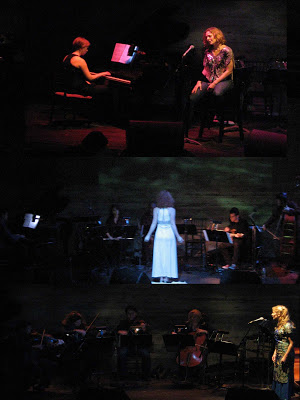

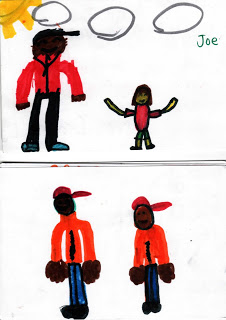
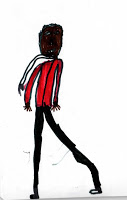
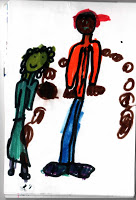

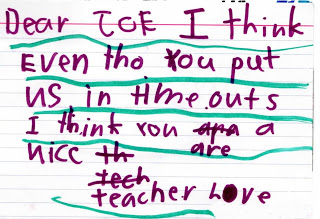

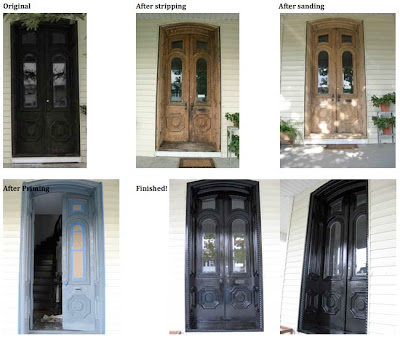
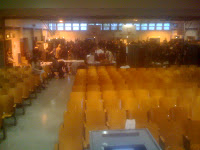

 RSS Feed
RSS Feed